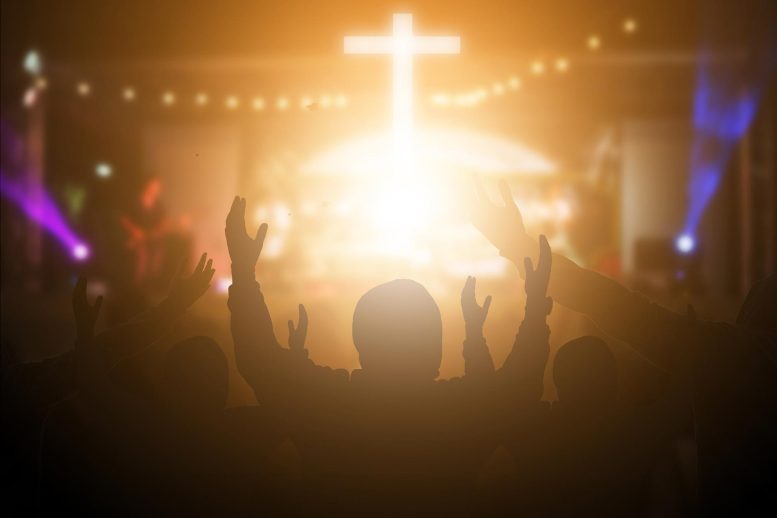
More religious congregations in communities correlate with fewer mass public shootings, particularly those associated with isolation or alienation rather than socioeconomic disparities.
Communities with more religious congregations have fewer mass public shootings, according to new research from Binghamton University, State University of New York.
“Culturally speaking, America is at a moment where there are a lot of people who feel alienated and isolated from social, economic, and political institutions,” said Brendan Szendro, a doctoral candidate in political science at Binghamton University.
Outside the bounds of community, individuals can succumb to a tide of despair and solitude. Some may find their answers in God, renewing their sense of community within the context of religious faith. Others give in to alienation, and succumb to deaths of despair from suicide or addiction. Some choose to enact their rage on the community itself, committing horrific acts of random violence.
Szendro has long been interested in the intersection of religion and politics, and particularly with how religion fosters what political scientists call “social capital.”
“In academic terms, it’s a community’s capacity for collective action, but in practical terms, it refers to the direct network ties between people,” he explained. “It can be kin relationships; it can be anything that’s interpersonal.”
Think of it this way: When you have a bad day, you might turn to personal sources of support: friends and family, coworkers and acquaintances. People tend to cope with adverse situations more readily the more robust such social circles are. On the other hand, isolation and alienation can be psychologically traumatic, in some ways akin to physical pain, he explained.
Szendro analyzed county-level data from across the United States, making sure to account for such factors as population density. He found that communities with more religious congregations have fewer mass public shootings, although the decline in violence didn’t hold true for shootings that took place in the context of other crimes.
“What the religious institutions are good at mitigating are these forms of violence that specifically speak to isolation or alienation from community, rather than ones that speak to socio-economic disparity,” he said.
Religious institutions often connect individuals with their larger communities, particularly when the overall community is small; urban environments tend to be less reliant on religious institutions to foster interpersonal relationships. In the context of mass shootings, Szendro considered how disconnection from communal elements could lead to a sense of isolation and resentment, and the ultimate choice to commit an act of random violence.
“I’m not saying that religious institutions play the only role in mitigating these events, but it does speak to the notion that the more people in a group support each other, the less likely you are to have people fall through the cracks,” he said.
Reference: “Community, faith, and public violence: A county-level examination of religious institutions and mass public shootings in the United States” by Brendan Szendro, 3 November 2021, Journal of Crime and Justice.
DOI: 10.1080/0735648X.2021.1990786









One of the roles of religion has always been to provide moral guidelines and provide a sense of purpose such as serving God(s). The study supports the idea that religion serves that goal.
However, the FBI Uniform Crime Report has demonstrated that there is a correlation between crime rate in general, and homicide in particular, and the population of cities. This is probably due in part to anonymity and alienation, particularly among young males, in large cities. Gangs play an important role.
Religion may help to suppress that behavior. However, some mass shootings have been committed by religious people and some by arguably religious wackos!
Nothing is said in the article about the basic statistics or the statistical significance of the findings. That is a serious omission.
I have seen good kids falling out of school to join Gangs!
I use to see years ago municipalities getting together and forming Gang Task forces. These units worked with the Feds. They knew every member of hundred of gangs and the undercover personnel would buy quantities of both Drugs & Weapons.
The School Resource Officer would work his end by trying to keep these wanaby kids from joining the gangs or help getting out of the gangs. They would work with the Deans, Counsellors, Parents, Court Personnel, Judges, Attorney’s, and Businesses. The police would start programs such as opening up schoo Gyms to let the kids have their a chance to have fun. The Police could start programs such as “Just Chill” or “Judicial Watch done by the schools Honor Roll students & Scool Resource Officer.
There is so much more you can do but these tactics were taken away by most municipalities because the City Councils were getting pressure from Realestate, people who were having a hard time showing houses with gang information in their local papers. Just one of a few set backs. Then after these programs were stopped the Gang Activity went on a climb.
Remember these kids see better opportunities to have fun getting Tattoos, Drinking Alcohol, Having Sex, and firing real guns.
I forgot to mention in my last post that the Police would utilize the Priests. It works with helping families deal with the loss of their children with the gangs.